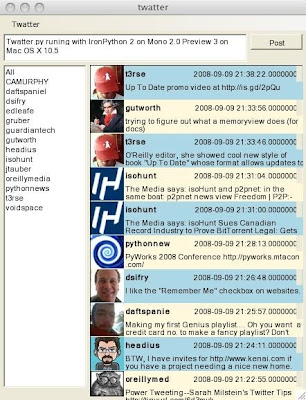Unit Testing in Python
The "Test Driven Developer", a .NET developer, has been using IronPython - and is " having a good time testing code with its built-in unit test framework ". He posts some example code with tests using the unittest module: Unit Testing in Python " This example should illustrate that we can write some unit tests for our Python code fairly easily and quickly. It's nice to have a built-in framework for unit testing. There is also a "doctest" module available for doing more like system testing. "
